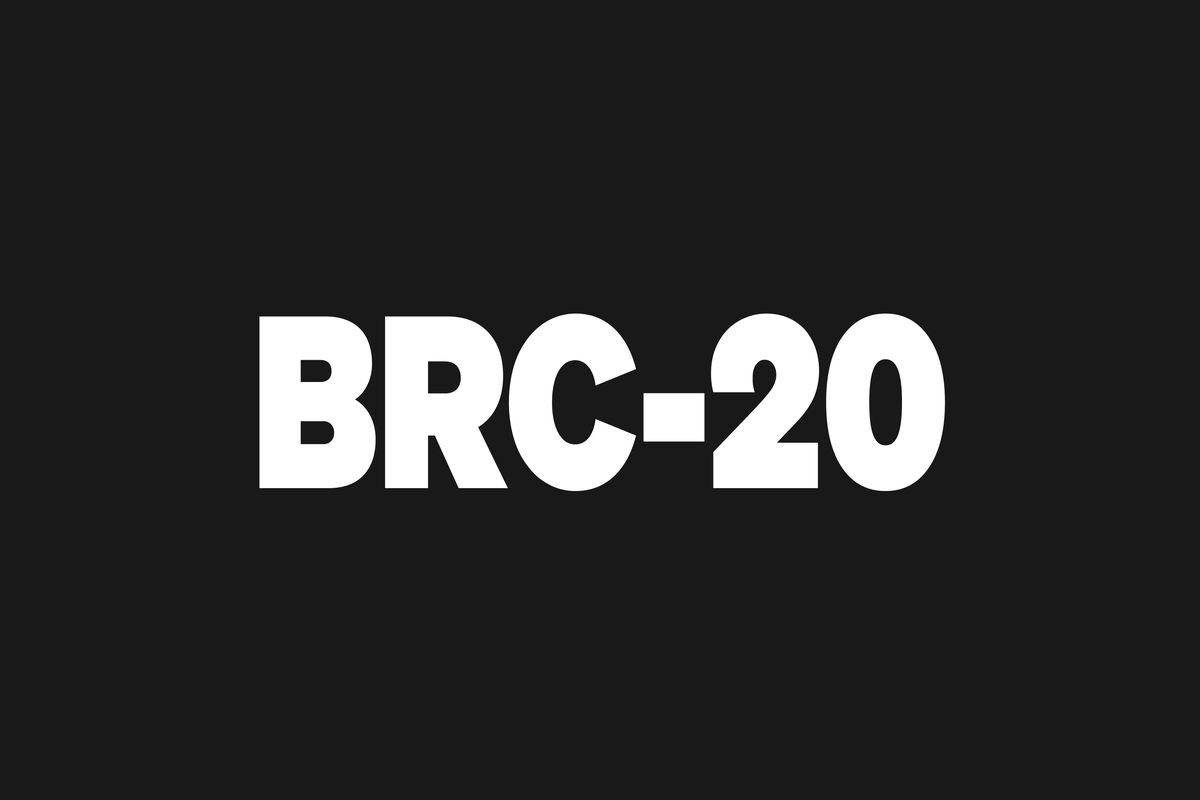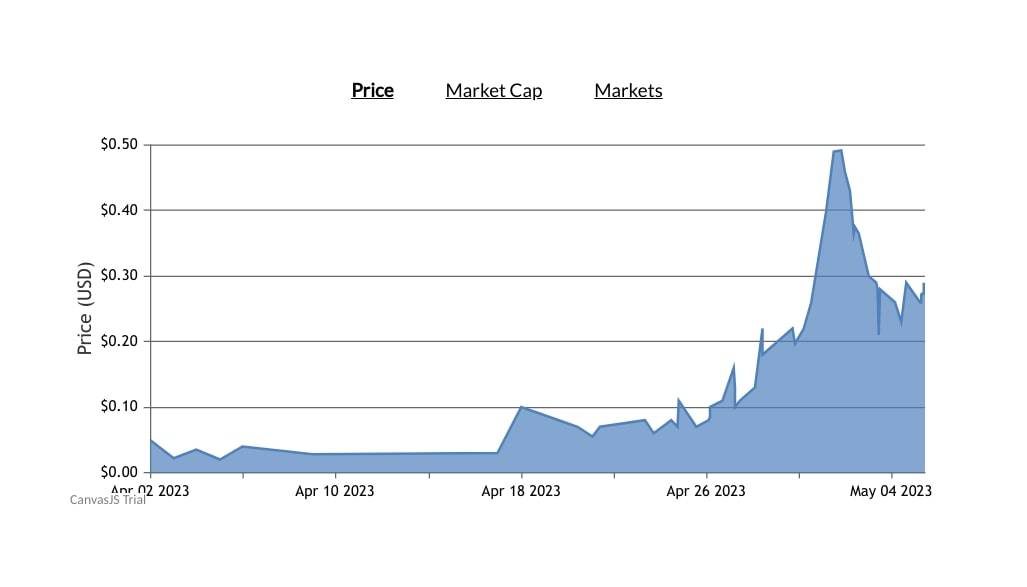BRC-20 tokens are primarily an experimental fungible token standard designed for the Bitcoin blockchain. The token standard was inspired by Ethereum’s ERC-20, and it lets developers create and transfer fungible tokens using the Ordinals protocol.
The BRC-20 token standard was developed by an anonymous on-chain analyst called Domo in March 2023. Unlike ERC-20 tokens, BRC-20 tokens do not use smart contracts. Instead, they use Ordinals inscriptions of JSON data to mint, deploy, and transfer tokens. As of May 8, 2023, 14,200 different tokens had already been minted using the BRC-20 standard, including ORDI, the first BRC-20 token.
Bitcoin’s Ordinals Protocol
The Ordinals protocol was developed by Casey Rodarmor. This protocol supports the creation of Bitcoin Ordinals NFTs. The primary aim of the Ordinal theory is to provide every satoshi with a unique identity, enabling them to be transferred, tracked, and imbued with individual meanings via inscriptions. This lets every satoshi be different from all others, thus becoming non-fungible.
Notably, the Ordinals protocol assigns each satoshi a sequential number. Precisely, every satoshi is numbered in the order they get mined and can be inscribed with data – including text, pictures, and videos – via a Bitcoin transaction. The inscriptions can be up to 4 MB in size.
The primary benefit of inscriptions that are engraved through the Ordinals protocol is that the necessary data (such as images and text) is contained on the Bitcoin blockchain. That is viewed by most as having an elevated level of immutability.
Related: What Are Bitcoin Ordinals And How Do They Work?
The BRC-20 Market Is Growing Quickly
Since the unveiling of this standard, BRC-20 tokens have cumulatively reached a market capitalization of more than $159 million, taking most by surprise.
BRC-20's surge to $160M market cap … pic.twitter.com/4AG3QbNv7J
— Mark Jeffrey (@markjeffrey) May 5, 2023
Based on BRC-20.io, the 24-hour trading volume of the tokens recently surpassed three million dollars. With more than 14,200 BRC-20 tokens minted so far, it is known that the BRC-20 standard is attracting most crypto enthusiasts.
The fame and popularity that surrounds BRC-20 tokens are attributed to the hype arising from the Pepe Coin (PEPE). The Pepe Coin BRC-20 token trading volume has been increasing rapidly as more investors dive into the market. Notably, this crypto is a memecoin. It means that PEPE is based on a popular internet meme, Pepe the Frog.
As seen from the market data, PEPE has been surging with more demand coming in from whales and retail investors alike.
Several other BRC-20 tokens like MEME, ORDI, and MOON have gained lots of prominences. These coins are not yet popular in the market since they are still relatively new. Since the BRC-20 token standard launched in March 2023, most of the tokens that use this standard are, interestingly, just in their infancy at the time of publication.
Most Bitcoin Ordinal collections were hasty to hop on the BRC-20 bandwagon, including Ordinal Monkey Club.
While it is quite exciting to see different BRC-20 tokens become a hot topic, it is worth remembering that it is still a relatively new token standard. So, it is advisable to do background research to ensure that you gain a strong foothold in the crypto sector.
Advantages Of BRC-20
Even though BRC-20 is still budding, it is gaining popularity as more people explore the possible benefits of the token standard:
- Compatibility – BRC-20 tokens are primarily compatible with the Bitcoin blockchain. That makes it quite easy to incorporate with the Bitcoin network. Furthermore, current Bitcoin developers can easily develop and integrate BRC-20 tokens.
- Security – BRC-20 tokens are powered by the Bitcoin blockchain, hence inheriting the high level of security offered by the Bitcoin protocol. Bitcoin utilizes the Proof of Work (PoW) consensus mechanism and has many miners who help secure the network, which makes it one of the best and most highly secure blockchains.
- Fungibility – BRC-20 tokens are fungible, meaning they can be readily traded on venues, providing a simple alternative to users who are new to Bitcoin trading.
Related: Bitcoin : A New Norm for Bitcoin Trading
Shortcomings Of BRC-20
The opinion in the Bitcoin community is diverse when it comes to the merits of BRC-20 and Ordinals. While some of the users see them as innovative experiments, others believe that they come as an undesired way of moving away from Satoshi Nakamoto’s original vision for Bitcoin. Some of these drawbacks linked to BRC-20 include:
- Possibly high transaction fees – because of the intense increase in BRC-20 token activity, transaction fees on the Bitcoin network have increased as the number of BRC-20 transactions also increased.
- Restricted ecosystem – Although BRC-20 seems to be gaining popularity, it is a budding token standard having a relatively smaller ecosystem than that of ERC-20. It means there are limited resources, tools, and developers available for managing and building these BRC-20 tokens.
The Takeaway
BRC-20 tokens are still at an early stage. Therefore, a lot of time is necessary to determine their impact on the Bitcoin blockchain in general.
The experimental stage gives space for better design choices and some optimization advances in the future. Interestingly, a new Bitcoin token standard, ORC-20, has been created to resolve the limitations that come with BRC-20 and enhance its functionalities.
BRC-20 tokens indicate that Bitcoin is still advancing and evolving past its original purpose as a medium of exchange and a store of value. They are growing quickly and can play an integral role in the long-time development of the Bitcoin blockchain.










